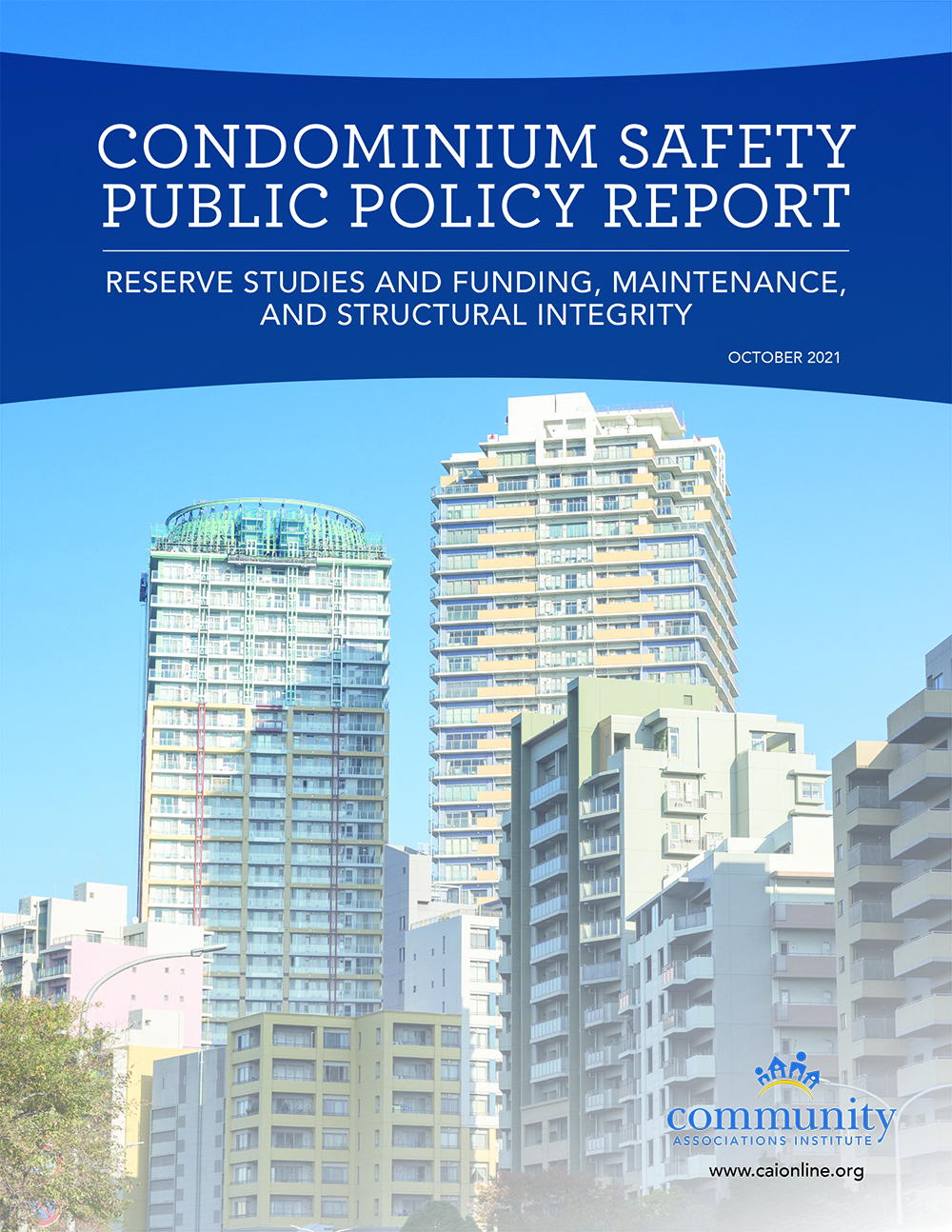 Following the tragic partial collapse of Champlain Tower South in Surfside, Fla., in late June, CAI convened three specialized task forces to explore changes to laws and best practices for the community association housing model that could help other communities prevent a similar event and to provide solutions for legislators addressing building safety in their districts.
Following the tragic partial collapse of Champlain Tower South in Surfside, Fla., in late June, CAI convened three specialized task forces to explore changes to laws and best practices for the community association housing model that could help other communities prevent a similar event and to provide solutions for legislators addressing building safety in their districts.
More than 600 people participated in this three-month process to identify clear recommendations through conversations, surveys, research, and interviews. CAI brought together reserve analysts, attorneys, insurance and risk management professionals, developers, engineers, architects, community association managers, and homeowner leaders to provide their expertise. Outreach also was made to experts in a wide range of disciplines and from numerous organizations to help inform these recommendations.
An important consideration in this process was meeting the demands of multiple stakeholders, including: state legislators seeking to introduce legislation in 2022; congressional representatives considering immediate solutions for their constituents; federal housing finance agencies aiming to mitigate their risks; private insurers; and homeowners and residents in condominiums and housing cooperatives expecting to feel safe in their homes.
The public policy recommendations are in the areas of reserve studies and funding; building maintenance; and structural integrity. CAI believes these recommendations should be considered for adoption into state law to support the existing statutory framework for the development, governance, and management of community associations.
A summary of the public policy positions are detailed below. The full Condominium Safety Public Policy Report: Reserve Studies and Funding, Maintenance, and Structural Integrity is at www.caionline.org/condosafety
Reserve Studies and Reserve Funding
According to the Foundation for Community Association Research’s Breaking Point report, 80% of community association managers, board members, and service providers surveyed felt it was critical that their association have adequate reserves in the event of a major infrastructure failure or construction need.
Although not intended to evaluate existing building conditions or to specify corrective repairs, reserve studies are a planning tool to assist with budgeting for replacement or substantial repairs based on a component’s remaining useful life. It’s unclear if updated standards in this area would’ve prevented the collapse of Champlain Tower South, but it’s important to educate legislators and other stakeholders about the purpose and importance of reserve studies and reserve funding plans.
CAI recommends statutorily mandating reserve studies and funding for all community associations. The recommendation in the full report provides details to help communities prepare for and a timeframe to practically transition to these new requirements to avoid financial strain on homeowners and the association. The Foundation’s Best Practices Report: Reserve Studies and Reserve Management provides excellent procedures pertaining to reserve planning and funding for homeowner leaders and community managers to put into practice immediately.
Building Maintenance and Structural Integrity
Nearly half (40%) of those surveyed in the Foundation’s Breaking Point report considered deteriorating infrastructure as a top-ranked concern, while 70% indicated that maintaining property values was of primary importance.
As a building ages, the cumulative cost of operating and maintaining facilities significantly impacts the overall budget, not just the maintenance budget, notes a recent report from Stanford University titled Guidelines for Life Cycle Cost Analysis. The greater issue with deferred maintenance is that it only grows in scope—and cost—the longer it is deferred, resulting in 30 times the cost to repair versus keeping up with routine maintenance, according to Stanford’s report.
CAI recommends additional requirements by developers during the development process and prior to transition to the homeowners. CAI worked closely with developers on these recommendations. Structural integrity is addressed through statutorily mandated building inspections starting when the building is 10 years old, another inspection at 20 years, and every five years thereafter. Inspections are based on the American Society of Civil Engineers’ (ASCE) published protocol for building inspections (ANSI).
Local building inspectors play a key role in the execution of structural integrity public policy. Those with the authority to provide a certificate of occupancy and otherwise condemn a building have the authority and obligation to inspect a building’s structural integrity.
These policy recommendations provide support to community association elected boards and urge them to follow the advice of professionals, especially in circumstances that are related to life, health, and safety. They also must be supported by strong best practices for community association leaders, particularly condominium and cooperative board members.
CAI continues to develop additional guidance and best practices for condominium and housing cooperative boards, their managers, building inspectors, developers, accountants, reserve analysts, and other stakeholders.
Dawn Bauman, CAE, is senior vice president of government & public affairs at Community Associations Institute (CAI).
 (1).png)







